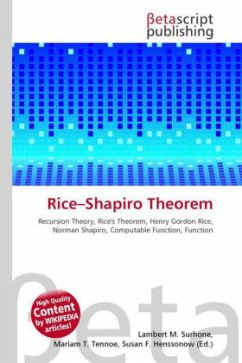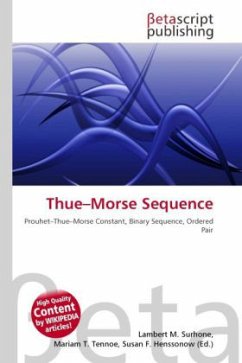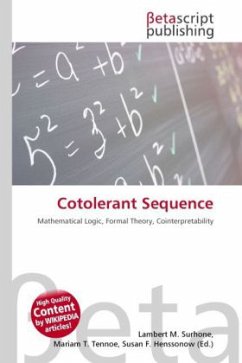
Rudin Shapiro Sequence
Versandfertig in 6-10 Tagen
22,99 €
inkl. MwSt.

PAYBACK Punkte
11 °P sammeln!
Please note that the content of this book primarily consists of articles available from Wikipedia or other free sources online. In mathematics the Rudin Shapiro sequence, also known as the Golay Rudin Shapiro sequence is an infinite automatic sequence named after Marcel Golay, Walter Rudin and Harold S. Shapiro, who independently investigated its properties. In mathematics, the Shapiro polynomials are a sequence of polynomials which were first studied by Harold S. Shapiro in 1951 when considering the magnitude of specific trigonometric sums. In signal processing, the Shapiro polynomials have g...
Please note that the content of this book primarily consists of articles available from Wikipedia or other free sources online. In mathematics the Rudin Shapiro sequence, also known as the Golay Rudin Shapiro sequence is an infinite automatic sequence named after Marcel Golay, Walter Rudin and Harold S. Shapiro, who independently investigated its properties. In mathematics, the Shapiro polynomials are a sequence of polynomials which were first studied by Harold S. Shapiro in 1951 when considering the magnitude of specific trigonometric sums. In signal processing, the Shapiro polynomials have good autocorrelation properties and their values on the unit circle are small. The most interesting property of the {Pn} is that the absolute value of Pn(z) is bounded on the unit circle by the square root of 2(n+1), which is on the order of the L2 norm of Pn. Polynomials with coefficients from the set { 1, 1} whose maximum modulus on the unit circle is close to their mean modulus are useful for various applications in communication theory (e.g., antenna design and data compression). Property (iii) shows that (P, Q) form a Golay pair.












